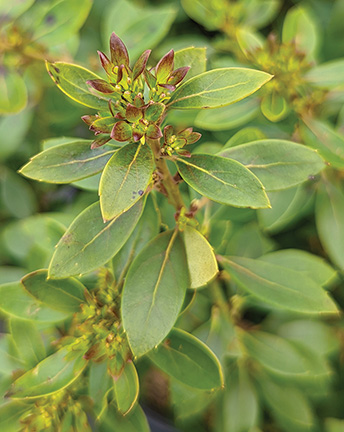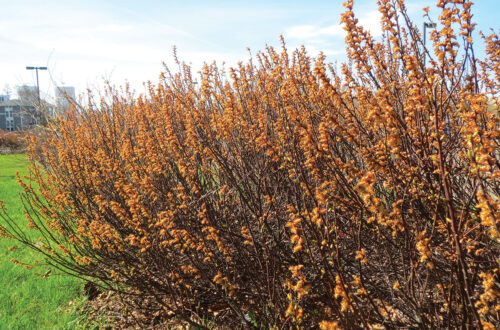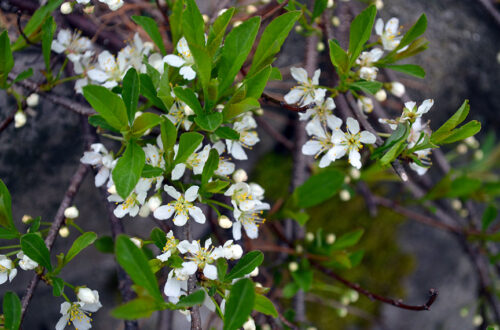By Michael Dirr
Ilex glabra, inkberry or gallberry, one of best native broadleaf evergreen shrubs, is used extensively in contemporary landscapes from Maine to Georgia and throughout the Midwest. The native range extends from Nova Scotia to Maine, south along the coast to Florida and west to Texas. According to the Florida Native Plant Society, the species grows in low flatwoods, seeps, coastal swales, bogs and sinks.
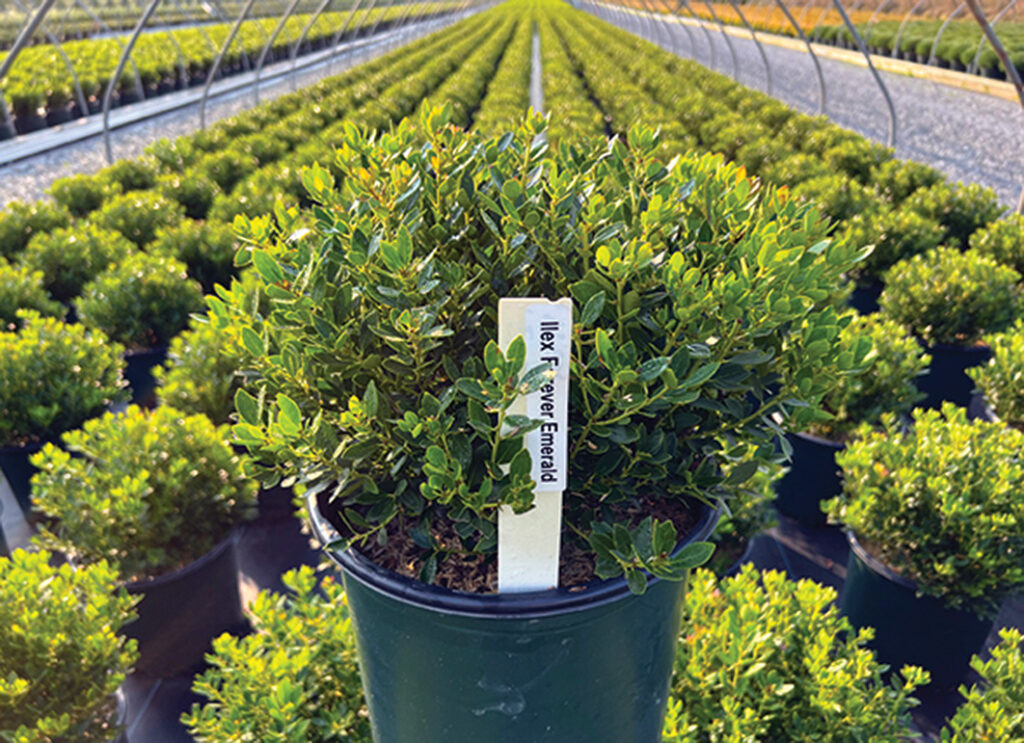
Photo / Overdevest Nurseries
I observed the species in wet areas on Cape Cod where it formed suckering colonies and in low flatwoods in the Okefenokee Swamp in South Georgia. Bonnie and I were hiking In the Okefenokee through thickets of this and Aronia arbutifolia and all I could think about was a snake lying in wait to say hello.
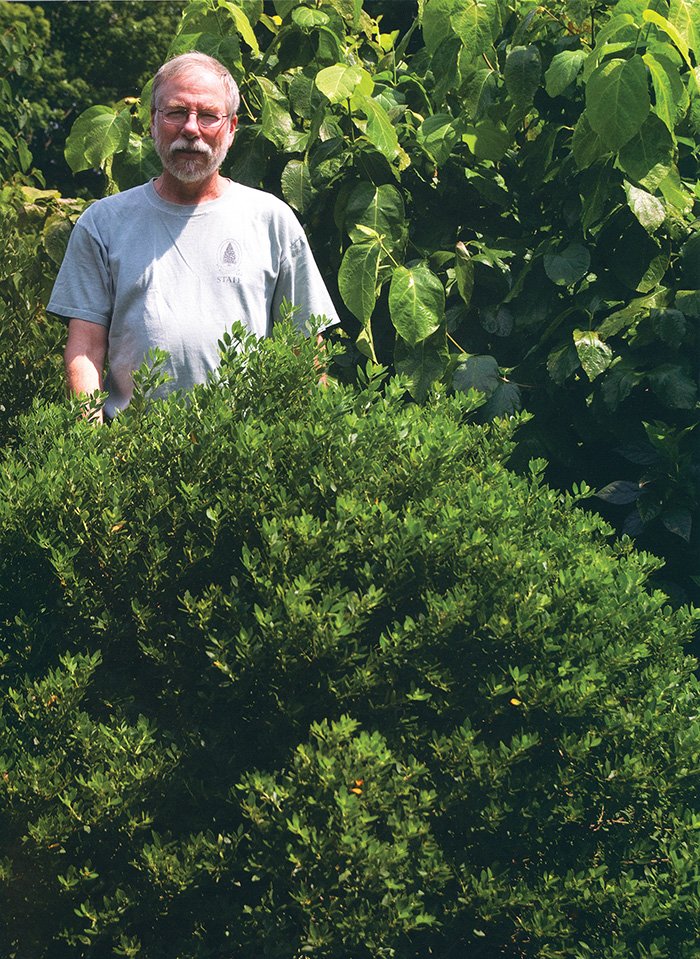
Size ranges from 6-8 feet in height by 8-10 feet in width. Many years past, I spied a 10‘ × 15‘ ‘Compacta’ at the Scott Arboretum, Swarthmore College. The Achilles’ heel with Ilex glabra is its universal propensity to drop lower leaves and lose that fine-textured billowy persona so inherent in young and intelligently pruned specimens.
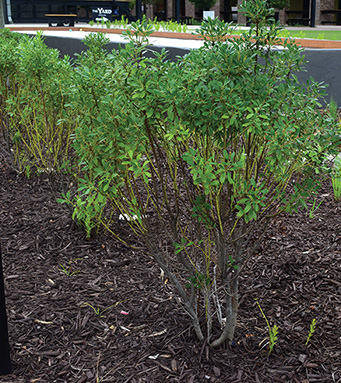
At the University of Georgia, I assembled a collection of Ilex glabra cultivars and over a 3-4 year evaluation period, ‘Nigra’ proved best because of the lustrous dark green foliage, compact habit, and leaf retention to the base. ‘Shamrock’ is also highly rated because of the glistening dark green foliage. Unfortunately, with age, lower foliage is lost. A survey of several major nursery catalogs affirmed ‘Compacta,’ ‘Densa,’ ‘Green Magic’ (exclusive Willoway Nursery introduction), ‘Nordic’, and ‘Shamrock’ were being commercially produced. ‘Green Magic’ is described as growing 3-4 feet high, 5-6 feet wide. Offers glossy foliage and showy black fruits. Surprised ‘Densa’ is popular as I remember an 8-10 foot high, open, leggy plant with a few fruits at the Arnold Arboretum. Certainly not small but has leathery dark green leaves and, when properly pruned, looks great in a container. ‘Nigra’ was nowhere to be found. So much for being the top-rated plant in Georgia trials.
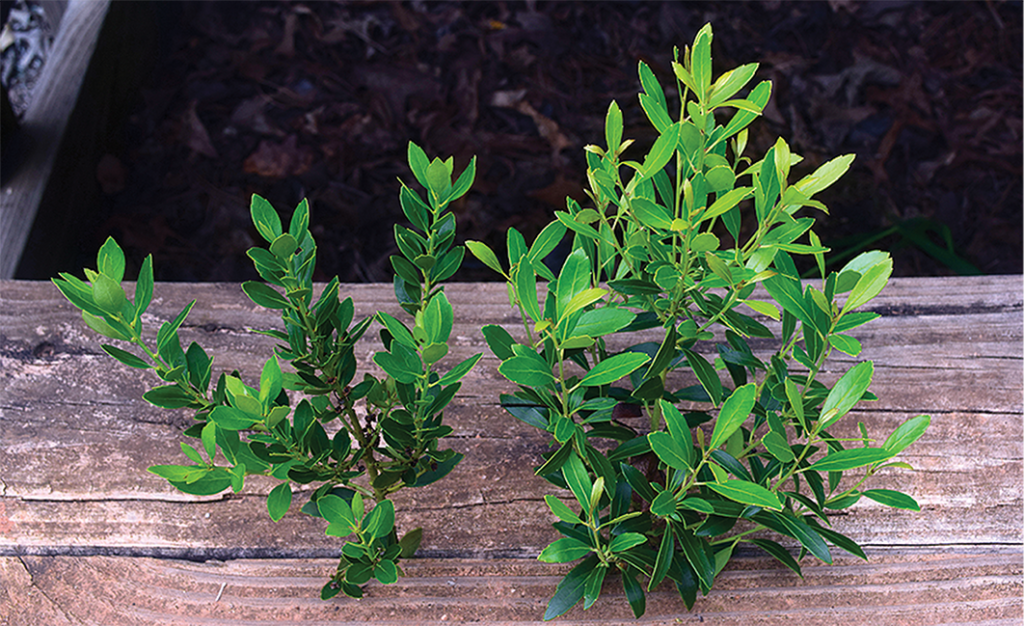
The relatively new Proven Winners/ Spring Meadow Gem Box® and Strongbox® were the most listed. They are discussed under cultivars along with Forever Emerald,™ a selection made by Jack Alexander, retired propagator, Arnold Arboretum, from Peggy’s Cove, Nova Scotia.
The species’ lustrous dark green foliage ranges from ¾“-2“ long, one-third to one-half as wide, entire at base to the tip of leaf where a few serrations occur. Foliage may lose some sheen in cold weather, turning dull green to bronze-green. However, the emerging leaves of spring render the winter discoloration obsolete in short order. The cream-white, 6-petaled flowers open in May (Athens), the female borne singly, the male in groups of three from the leaf axils of the previous season’s growth. The female flowers are a great source of nectar and thus bee pasture. The gallberry honey is mild flavored, light colored, highly prized and praised.
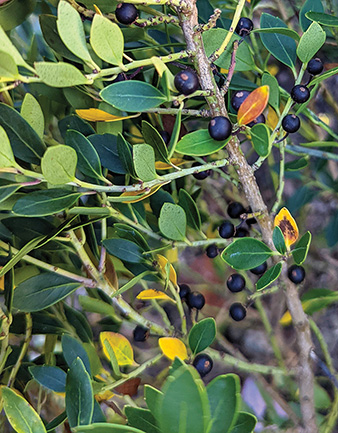
Fruits are shiny black, rounded drupes that mature in fall, often persisting through winter. Each ¼“-⅓“ diameter fruit contains 5 to 7 pyrenes, the hard, bony sculpted “seeds.” Fruits may be eaten by birds and, though bitter, are harvested as a last resort.
For Ilex glabra to fulfill its genetic potential, it requires moist. acid soils and full sun. I have observed numerous inkberries in arboreal shade in landscapes and the wild, and invariably they are open and scraggly. High pH soil conditions lead to foliar chlorosis. The best process for maintaining dense, full foliaged specimens is pruning on a regular basis. Unfortunately, I see new plantings in the Athens area and the plants are 50% bare-branched at time of installation. (See photo below). I am surprised these plants are not rejected by the owners.
Cultivars
I believe there is room for better Ilex glabra selections and, except for Gem Box® and Strongbox,® there has been little positive movement. When I first read about the above two, I was excited by the photos and descriptions. Both are listed at 2-3 feet by 2-3 feet and photos show foliage to the ground. At Plant Introductions Inc. (PPI), Gem Box® has been in the ground for 4 years and is 65 inches high and 40 inches wide, leggy at the base. Plants in containers often show early signs of legginess. I have yet to plant Strongbox® in the garden or at PII. However, plants in containers show the same symptoms as Gem Box® (See photos of Gem Box® and Strongbox® below).
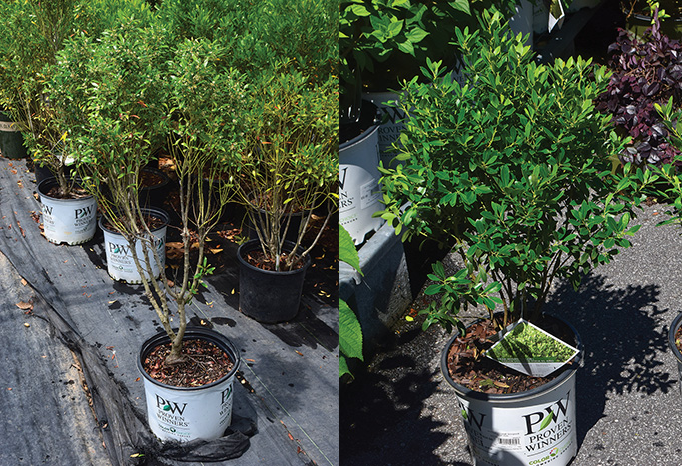
Forever Emerald™ (‘Peggy’s Cove’) is a feel-good story anchored to plant collecting and evaluation. It starts in 1988 with Jack Alexander collecting 38 cuttings from 12 different plants growing in a seaside barren among the rocks of Peggy’s Cove, Nova Scotia, never knowing whether they would be truly compact as the coastal environment rendered them as crevice dwellers. Within this group, Jack found ONE with compact habit, small dark green leaves and black fruits. It is the most prolific flowering Ilex glabra I have encountered. I speculated it would prove useful for a bee orchard. It has a mounded habit with branches hugging the ground. The original 22-year-old plant was 48 inches high and 60 inches wide (See Arnoldia 68(1) 2010 for the story and photos). Four lightly pruned, 8-year-old plants at the Arnold ranged from 22-36 inches high and 30-45 inches wide. The 4-year-old Forever Emerald™ planted in front of the same age Gem Box® is 34 inches high and 38 inches wide. Foliage is smaller than Gem Box,® Strongbox® and other cultivars averaging less than an inch long and about ⅜“ wide. Leaves are spaced 1/16“ to 1/8“ apart along the shoot resulting in an extremely dense plant.
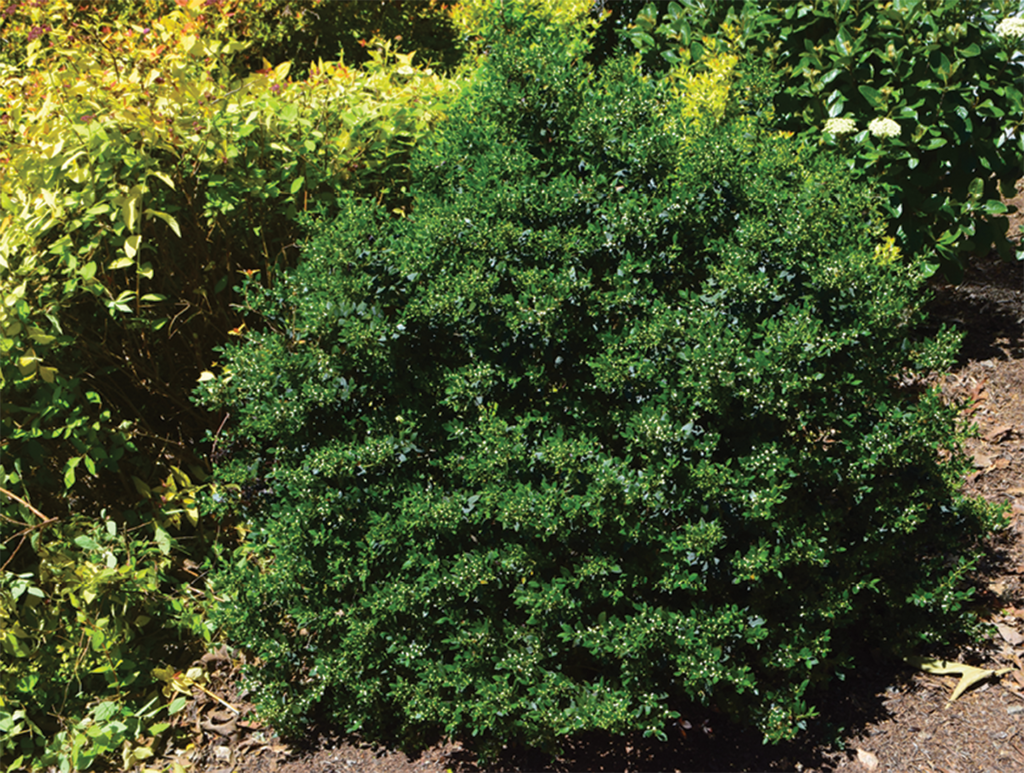
Jack gave me a plant in 2012 which I added to the garden in 2013. Indeed, it was true-to-type, and I asked Jack about introducing it to commerce with assistance from Mark Griffith and me. Jack received permission from the Arnold and Harvard to move forward. We agreed on a name, Forever Emerald,™ which was selected by Jack’s wife, Arlene. Mark continues to build numbers and the demand has exceeded supply.
I postulated it could be used in breeding and Tom Demaline, Willoway Nursery, Avon, Ohio, sent Nordic™ (‘Chamzin’) as a male pollinator. In 2022, the bees worked their magic and fruits are developing. Nordic™ was selected by Jim Zampini after a -24°F winter in northern Ohio. With Forever Emerald™ derived from a Zone 5 environment, perhaps new cold hardy, compact, densely foliaged selections will emerge. I am hopeful.
For more than 40 years, horticulturist, breeder, and author Michael Dirr has impacted the green industry through research, teaching, books, and plant introductions. He is the Endowed Professor for Woody Plant Instruction and Introduction at the University of Georgia. He earned his PhD in plant physiology from UMass Amherst.
SOURCES
Retail
• White Flower Farm, Morris, CT – whiteflowerfarm.com
• Catskill Native Nursery, Kerhonkson, NY – catskillnativenursery.com
Wholesale
• Prides Corner Farm, Lebanon, CT – pridescorner.com
• Overdevest Nurseries, Bridgeton, NJ – overdevestnurseries.com
This story previously appeared in the January 2023 edition of Nursery Management. Photos by the author except where noted.
